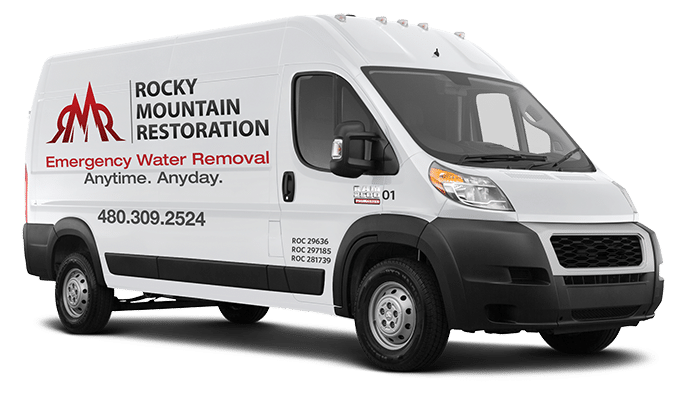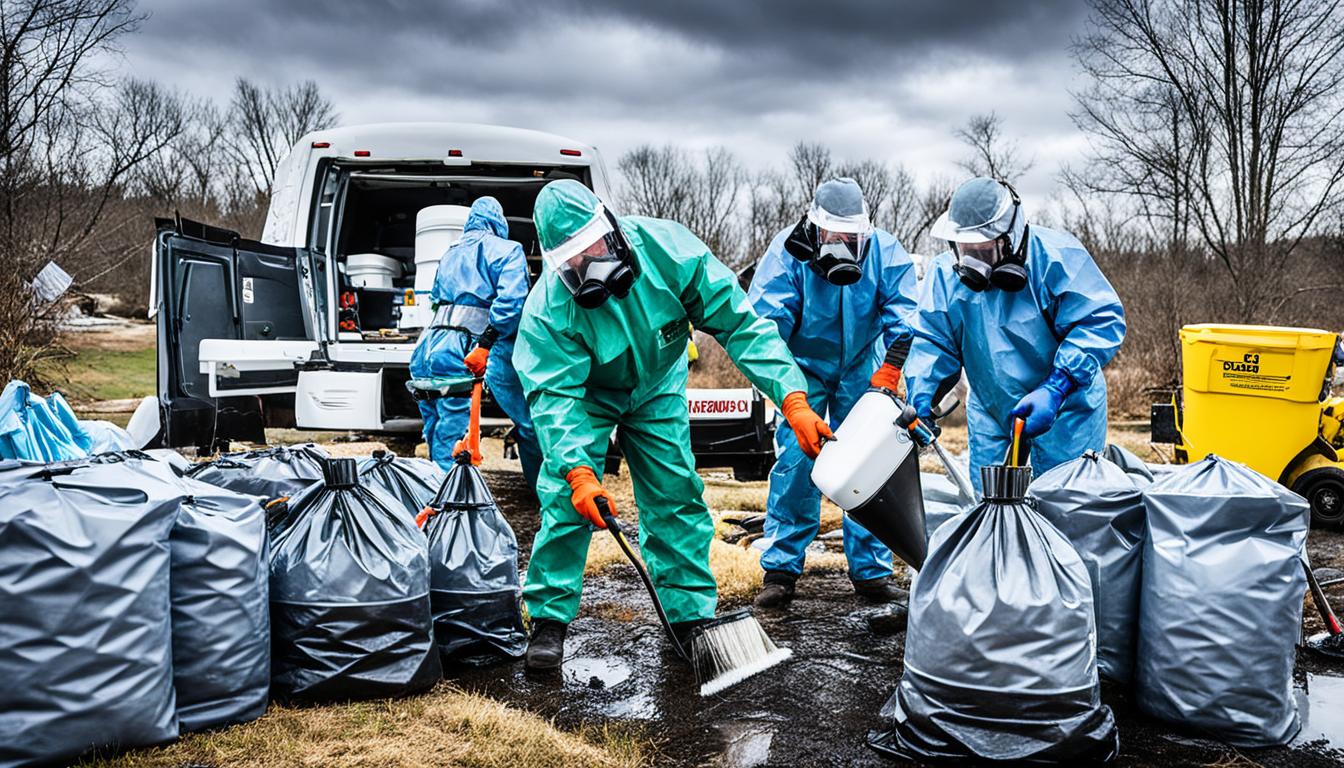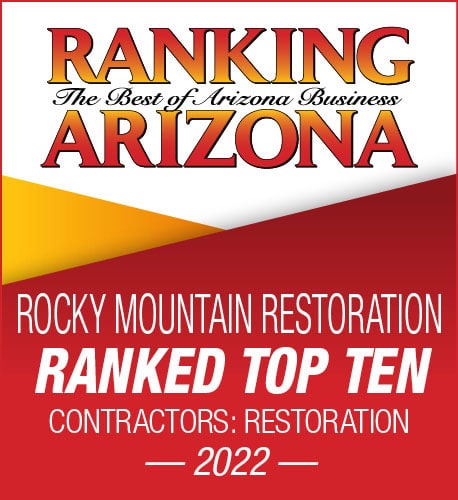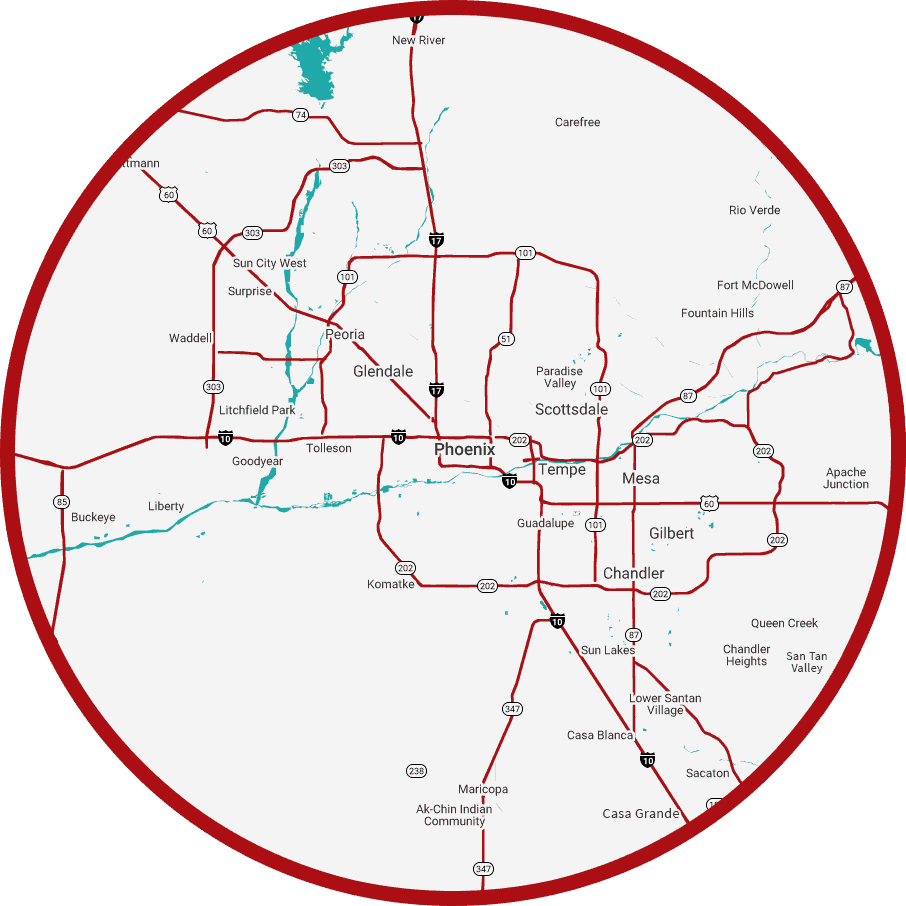Have you ever wondered what truly constitutes a biohazard cleanup? It’s not just about sprucing up a dirty space. Biohazard cleanup involves dealing with hazardous biological substances that can pose serious health risks. From mold and fungus to industrial chemicals and waste, these substances require specialized knowledge and techniques for safe removal and disinfection.
In this article, we delve into the definition of biohazard cleanup and its implications. We explore the classification of biohazard levels, the scenarios that trigger a biohazard cleanup response, and the step-by-step process involved. We’ll also discuss the critical role of professional biohazard cleanup companies and shed light on the costs and insurance coverage associated with this specialized service.
Key Takeaways:
- Biohazard cleanup involves the removal and disinfection of hazardous biological substances.
- Substances such as mold, fungus, industrial chemicals, and waste fall under the category of biohazards.
- Professional biohazard cleanup companies have the expertise, equipment, and techniques to safely handle and dispose of biohazardous materials.
- The Center for Disease Control (CDC) classifies biohazard levels into four categories: minimal threat, moderate threat, high risk, and life-threatening.
- Insurance coverage for biohazard cleanup may vary, so it’s important to review your policy and consult with your provider to understand the extent of coverage.
Understanding the Biohazard Definition and Its Implications
Biohazard is short for “biological hazard” and refers to materials and substances that pose a threat to human and animal health. These hazards can include various types of harmful substances, such as mold, fungus, waste, industrial chemicals, and pests.
Biohazard cleanup is the specialized process of removing and disposing of these substances safely. It is also an essential component of crime scene management.
Understanding the biohazard definition is crucial for recognizing the potential risks and taking appropriate measures for cleanup. By identifying harmful substances and biological hazards, individuals and professionals can implement effective cleanup strategies and safety protocols.
Classification of Biohazard Levels and Safety Protocols
The Center for Disease Control (CDC) has established a classification system for biohazard levels to determine the appropriate safety protocols and precautions for each situation. This system categorizes biohazard levels into four distinct categories:
- Level 1: Minimal Threat
- Level 2: Moderate Threat
- Level 3: High Risk
- Level 4: Life-Threatening
Each level corresponds to a different level of risk that the biohazardous materials pose. Based on this classification, specific cleanup procedures and safety protocols are implemented to ensure the safety of the cleanup process and the individuals involved.
Biohazard cleanup teams conduct thorough risk assessments to determine the appropriate level of precautions and safety measures necessary for each specific scenario. This assessment takes into account the nature of the biohazardous materials and the potential risks they present.
By following the CDC’s biohazard level classification system and adhering to the corresponding safety protocols, biohazard cleanup teams can effectively manage and mitigate the potential risks associated with different levels of biohazards.
Scenarios That Trigger a Biohazard Cleanup Response
There are various scenarios that may trigger the need for a biohazard cleanup response. These can include traumatic events, such as homicides, suicides, and unattended deaths, where bodily fluids and other biohazards are present. Crime scene cleanup is a common example that requires specialized biohazard cleanup. Other scenarios can include chemical contamination from industrial accidents, disease outbreaks in certain locations, sewage backups, fungal and mold infestations, and pest or animal infestations. Prompt and thorough biohazard cleanup is necessary in these situations to ensure the safety of the environment and prevent the spread of diseases.
- Traumatic events: Traumatic events such as homicides, suicides, and unattended deaths can release bodily fluids and other biohazards that require professional biohazard cleanup.
- Crime scene cleanup: Crime scenes often contain biohazards that necessitate specialized cleanup to ensure the safety of the environment and prevent contamination.
- Chemical contamination: Industrial accidents resulting in chemical spills or leaks can pose serious health risks and require thorough biohazard cleanup.
- Disease outbreaks: In locations where infectious diseases have spread, biohazard cleanup is essential to prevent further transmission and maintain public health.
- Sewage backups: Sewage backups can introduce harmful bacteria and pathogens into indoor environments, necessitating immediate biohazard cleanup.
- Fungal and mold infestations: Fungal and mold infestations can release spores that pose health hazards, requiring professional biohazard cleanup to remove the contamination.
- Pest or animal infestations: Infestations by pests or animals can leave behind biological waste and introduce biohazards, necessitating thorough cleanup to eliminate the risks.
Prompt and professional biohazard cleanup is crucial in these scenarios to mitigate potential health risks, prevent the spread of infectious diseases, and restore a safe and clean environment.
Call Rocky Mountain Restoration at (480) 418-6992 for emergency biohazard cleanup services.
Step-by-Step Process of Biohazard Cleanup
Biohazard cleanup requires a systematic approach to ensure the effective removal and disinfection of hazardous substances. The process involves several key steps, each crucial in ensuring the safety and thoroughness of the cleanup.
Clean Zone Creation
The first step in the biohazard cleanup process is the creation of a clean zone. This involves setting up a designated area to prevent the spread of contaminants. The clean zone serves as a barrier between the affected area and the rest of the environment, minimizing the risk of cross-contamination.
Identification and Removal of Biohazardous Materials
Once the clean zone is established, the cleanup team proceeds to identify and remove the primary biohazardous materials. This includes safely disposing of items such as bodily fluids, hazardous chemicals, or other harmful substances. It is essential to follow proper removal procedures to minimize exposure and ensure the containment of the biohazardous materials.
Thorough Cleaning and Disinfection
After the removal of biohazardous materials, the affected areas undergo thorough cleaning and disinfection. This step involves the use of appropriate disinfection techniques and specialized cleaning agents to eliminate any remaining pathogens or contaminants. It is important to ensure that all surfaces and objects are properly cleaned and disinfected to restore a safe and healthy environment.
Waste Disposal
Proper disposal of the generated waste is a critical aspect of the biohazard cleanup process. Biohazardous waste must be handled and disposed of according to local regulations and guidelines. This includes collecting and packaging waste materials in biohazard-safe containers and arranging for appropriate disposal methods, such as incineration or professional hazardous waste services.
Object and Surface Repair or Replacement
In some cases, objects or surfaces may be damaged or contaminated beyond repair during the cleanup process. This could include removing and replacing items such as carpeting, drywall, or furniture. Repairing or replacing damaged objects and surfaces ensures the complete restoration of the affected area and eliminates any remaining sources of potential contamination.
Professional biohazard cleanup companies have the expertise, equipment, and specialized techniques to handle each step of the cleanup process efficiently and safely. By following these systematic steps, biohazard cleanup teams can effectively mitigate the risk of exposure to hazardous substances and restore the affected area to a safe and habitable condition.
The Role of Professional Biohazard Cleanup Companies
When it comes to biohazard cleanup, hiring professional companies is crucial for ensuring effective and safe cleanup. These companies have trained technicians who possess the expertise to handle hazardous substances and follow proper safety protocols. Their knowledge and experience allow them to identify and remove biohazardous materials effectively.
One of the key advantages of engaging professional biohazard cleanup services is their access to specialized equipment and tools specifically designed for this purpose. The use of specialized equipment ensures that the cleanup process is thorough and adheres to the necessary safety regulations. By employing the latest technology and techniques, professional cleanup teams can mitigate risks and maximize efficiency.
Professional biohazard cleanup companies also play a vital role in following industry standards and guidelines. They understand the importance of maintaining a safe and healthy environment during the cleanup process. By adhering to these standards, they ensure that the cleanup is carried out in a manner that minimizes any potential health hazards.
Additionally, hiring professionals for biohazard cleanup provides peace of mind to property owners and occupants. Knowing that trained technicians are handling the cleanup process instills confidence in the effectiveness and safety of the cleanup efforts. It helps alleviate the stress and burden associated with dealing with hazardous situations.
Overall, professional biohazard cleanup companies bring a high level of expertise, specialized equipment, and adherence to safety protocols to ensure effective and safe cleanup. Their role is essential in managing biohazardous situations, protecting the health and well-being of individuals, and minimizing the risk of further contamination.
Understanding the Costs and Insurance Coverage for Biohazard Cleanup
Biohazard cleanup costs can vary depending on the severity of the situation and the extent of the cleanup needed. These costs typically include labor, equipment, disposal fees, and any necessary repairs or replacements.
It is important to note that insurance coverage for biohazard cleanup may vary. However, most homeowner’s insurance policies provide coverage for cleanup costs related to various situations, such as suicide, crime, unattended death, medical emergencies, infectious agents, and even mold removal resulting from a covered peril.
To determine the extent of coverage for biohazard cleanup, it is advisable to review your insurance policy and consult with your insurance provider. They can provide you with specific information regarding the coverage and any limitations or exclusions that may apply.
Having proper insurance coverage can help alleviate the financial burden of biohazard cleanup. It is essential to understand the terms and conditions of your policy to ensure that you have adequate coverage in case of any biohazard-related incidents.
Whether you need biohazard cleanup due to a traumatic event, infectious disease outbreak, or other hazardous situations, it is crucial to consider the potential costs involved and the available insurance coverage. By being prepared and reviewing your insurance policy, you can ensure that you are financially protected and can efficiently address any biohazard cleanup needs that may arise.
Conclusion
Biohazard cleanup is a crucial process that involves the removal and disinfection of harmful biological substances. It requires specialized knowledge, equipment, and techniques to ensure effective and safe cleanup. Professional biohazard cleanup companies play a vital role in providing the expertise and services needed for thorough cleanup.
Understanding the definition of biohazards, the classification of biohazard levels, and the process for biohazard cleanup is essential for recognizing the need for professional assistance and taking appropriate action. By hiring professionals, you can ensure the safety of both the environment and the individuals involved in the cleanup process.
When dealing with biohazards, it is important to prioritize the health and well-being of all parties involved. Professional biohazard cleanup services have the experience and training to handle these hazardous substances responsibly. They follow industry standards and guidelines to ensure a thorough and safe cleanup, reducing the risk of exposure to harmful biological materials.
To safeguard yourself and others from potential dangers, it is recommended to rely on professional biohazard cleanup services. Their specialized equipment, knowledge, and expertise can effectively mitigate risks associated with biohazards, providing you with peace of mind during the cleanup process.













